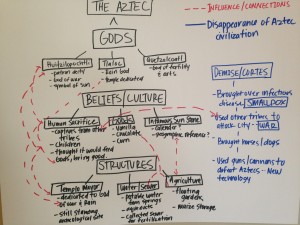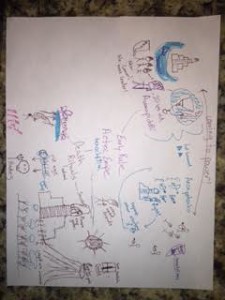Okay so looking at the prezi that is linked in this post you can see it is a bit vague, don’t worry I plan on going in depth with it. First off the point of the concept map, in true Agerbeck fashion, is to help me to write these few paragraphs all about what values and habits were in common between these three sacred locations. The values being looked at are those at the time of the sacred location’s use and how those values have changed to modern day.
Looking at the big picture first, they all have religion tightly involved in why they are what they are. The next step after that was to break it down into what I felt were good subtopics, sacred grounds or sacred structures. The reason for this break down is due to Machu Picchu. Machu Picchu isn’t a temple, mosque or a church, it is in fact a whole city that has values placed in each section it is divided into. Shortly after that I needed to talk about the materials that are involved this is to help relate each building together with something that is a pivotal point of each location. Looking at the Hagia Sophia we can see that it is a large structure similar to the Aztec’s temples, where religious practices took place. Now on the flip side Machu Picchu isn’t just a place to pray it also came with the values of agriculture similar to how the Aztec temples are. Knowing that the values for the Inca’s Machu Picchu and the Aztec’s you can see that their religion was so similar even though comparing and contrasting, they are in two different continents.
Now lets look at the final bit, the values that are present today in these locations are all about the amazing feats. The Inca’s were amazing stone craftsmen, the Aztec’s were devoted natives, and the Hagia Sophia was a feat. with a value in its history. The commonalities are the values, for example the value we place in all of the locations, is for the fact that they are all standing artifacts that allow us to dive into the past with a promise to continue showing all their value as long as they stand.

